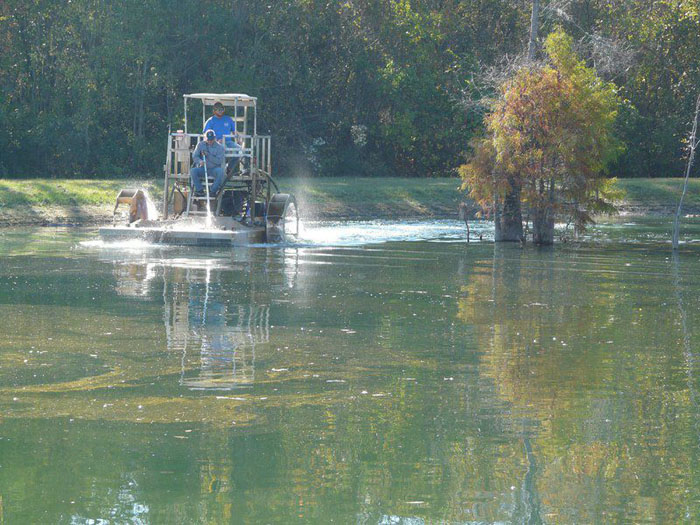Importance of pond liming
Published 1:00 pm Wednesday, December 7, 2016

- Submitted photoAlan Dennard and Ken McKinis lime a pond.
The best part of a county agent’s job is working with a multitude of agriculture subjects. The worst part of a county agent’s job is working with a multitude of agriculture subjects.
There are many sciences in agriculture, and I have interest in all of them. The real issue is learning them all. When I first started the job five years ago, a veteran agent said, “Don’t try to read and learn everything at once, just go one call at a time.” Man, was he right …
Trending
Most of us county agents have a background or education in farming or row crop sciences. However, we all receive questions concerning fish ponds throughout the season. This is a topic I have truly learned on the job. County agents investigate weed control issues, fish-related questions and fertilization topics.
Before I share information on the topic of liming a pond, let me clarify that this is different from a standard fertilization program. We do not discuss fertilization in ponds often. This is because a random fertilization program in a fish pond is the worst practice you can make. If you fertilize once, you are committed to it for the rest of time. Ponds under catfish production undergo this type of management.
However, we can still achieve great health benefits with liming ponds every few years without committing to long-term work. Most of our soils have acid characteristics that result in pond water quality that does not provide adequate amounts of hardness or alkalinity for fish.
Acid soils have a characteristic of binding nutrients so that they are not available for algal production. Microscopic algae (phytoplankton) are essential in fish ponds for the production of oxygen. Algae also convert dissolved nutrients, which may be toxic to fish, into a plant protein, which is not a toxic form of nitrogen.
Liming is also important for weed control issues. Sometimes we must use herbicides to control large weed infestations. Herbicides containing copper can only be used effectively when the alkalinity of pond water is near or above 50 parts per million (ppm). For example, copper sulfate is more likely to cause fish toxicity than chelated copper compounds such as copper citrate.
How do you know if the pond needs lime?
Trending
Testing pH in water is not recommended, because the pH in water changes throughout the day. It is best to test the hardness of the water to determine liming needs. UGA Extension aquatic specialist Dr. Gary Burtle has worked with the UGA Water Lab devising a pond water sample.
Ponds are essentially going to need lime every few years. In five years I have yet to see a pond water sample not recommend lime. Remember, our soils in Georgia are acidic.
If no water is present in the pond, you can do a pH test of the soil. This would be the simplest method.
How do you apply lime to a pond?
The worst thing we can do is dump lime into the water from the edge of the pond. Sometimes, people will lime around the pond from the edge. These methods create “hot spots,” and the lime is not distributed properly. It needs to cover the entire pond.
The lime must be applied by boat. It takes specialized equipment to properly cover the pond with the correct liming rate. We have a few pond consultants in our area who help landowners with this type of work.
UGA Extension aquatic scientists have conducted tests to study the ability of several lime sources to improve alkalinity in fish ponds. The issue is solubility. Hydrated lime, calcium hydroxide, is a good source of lime for ponds. It can be used in relatively small quantities to add calcium to pond waters.
After the initial lime requirement is met, the hardness of pond water will change over time.
For additional questions, contact the Thomas County Extension office at 225-4130.






